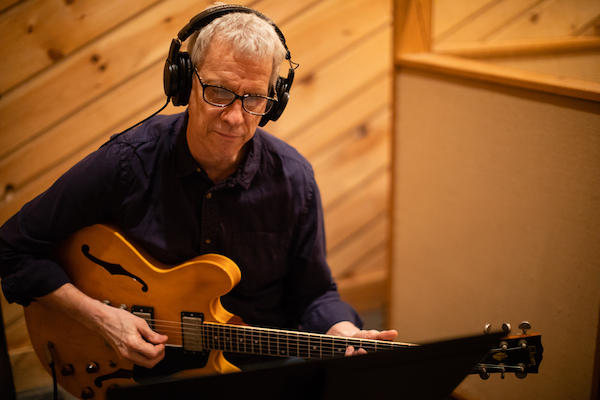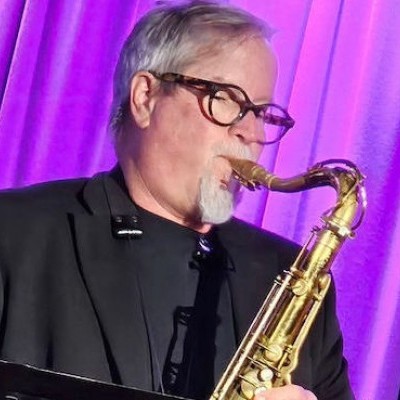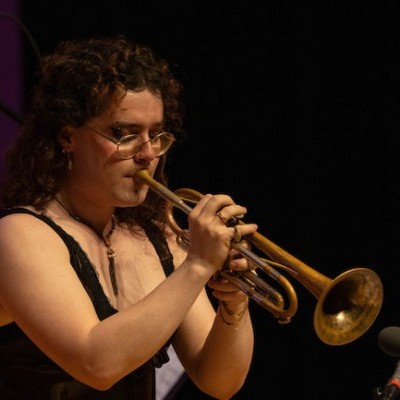Oct 28, 2025 10:47 AM
In Memoriam: Jack DeJohnette, 1942–2025
Jack DeJohnette, a bold and resourceful drummer and NEA Jazz Master who forged a unique vocabulary on the kit over his…

The time Steve Cardenas has spent performing alongside Charlie Haden, Paul Motian, Norah Jones and Madeleine Peyroux has come to bear on his approach to guitar.
(Photo: Anna Yatskevich)But it’s true that I’ve gravitated toward a less processed sound. I just like the sound of an electric guitar going through an amp with some reverb, as well as some crunch on the sound for certain tunes. It wasn’t an early decision as much as an evolutionary process, I suppose. But I have used, and still do use, other sounds and effects on various recordings and with other groups. It ultimately comes down to what feels right for the music.
You do have a kind of singing lyricism in your playing, and you’ve played with vocalists Jones and Peyroux. Is that vocal sensibility something you’re conscious of?
It’s something I’m aware of, but not consciously trying to do, if that makes any sense. I grew up listening to music that primarily had vocals, so I’m sure that has had an influence. But the instrumental musicians that I’ve been most drawn to also have that quality in their playing—Miles, Coltrane, Sonny Rollins. I always have the sense from these iconic musicians that the melody means as much as, if not more than, the solo that follows. That always speaks to me as a musician.
With your 2018 album Charlie & Paul, you paid tribute to two greats who you played with in Haden’s Liberation Music Orchestra and Paul Motian’s Electric Bebop Band. Did work with those players and groups leave a strong imprint?
Absolutely. The music always came first with those groups, as with other bands I’ve been lucky to be a part of for a while—Steve Swallow’s Quintet, Joey Baron’s band Killer Joey and many more. Having the opportunity to play as much as I have with all of these amazing musicians has affected my playing in so many positive ways—in a compositional sense, time and rhythm, intent and sound.
Do you have a sense of Midwestern grounding, given your Kansas City roots?
Kansas City was an incredibly rewarding place to grow up in, musically. Along with its jazz history, there was a very vibrant music scene happening while I was coming up—and it’s still strong today. Along with getting to play in many wonderful bands, there were a few legendary musicians on the scene during my time there, such as Jay McShann and Claude “Fiddler” Williams. I was lucky to play a handful of gigs with Claude; what a feeling that was. Danny Embrey and Rod Fleeman are two great guitarists and mentors that were very encouraging to me in those days.
Struggles of the day aside, are you happy with the way things are going in your musical life?
I’m just happy to have had the many opportunities to play music for others all my life. The musicians I’ve had the pleasure to play with, and the ones I continue to play with, have all been part of an ongoing evolutionary process for me as a musician and a person. It never ends, thankfully.
I feel like all aspects of my musicianship are at their best right now, and I’d like to see if I can keep it going that way. DB

Jack DeJohnette boasted a musical resume that was as long as it was fearsome.
Oct 28, 2025 10:47 AM
Jack DeJohnette, a bold and resourceful drummer and NEA Jazz Master who forged a unique vocabulary on the kit over his…

“I’ve told students, ‘I don’t mind if you use AI for this or that project,’” says MIT’s Pascal Le Boeuf. “‘But you need to tell me.’”
Sep 18, 2025 11:14 AM
A standard joke when it comes to discussing artificial intelligence, or AI, is that it’s developing so rapidly that…

Chuck Manning Works for NASA … and plays jazz.
Sep 18, 2025 11:23 AM
Congratulations! After years of study, you’ve earned your degree in jazz performance. But let’s face it: Making a…

Always a sharp dresser, Farnsworth wears a pocket square given to him by trumpeter Art Farmer. “You need to look good if you want to hang around me,” Farmer told him.
Sep 23, 2025 11:12 AM
When he was 12 years old, the hard-swinging veteran drummer Joe Farnsworth had a fateful encounter with his idol Max…

“Make time and energy to meet people and make friends,” suggests Millie Ahearn, a student at DePaul University.
Sep 18, 2025 11:32 AM
For many students, the transition into a collegiate jazz program can feel overwhelming — new peers, unfamiliar…